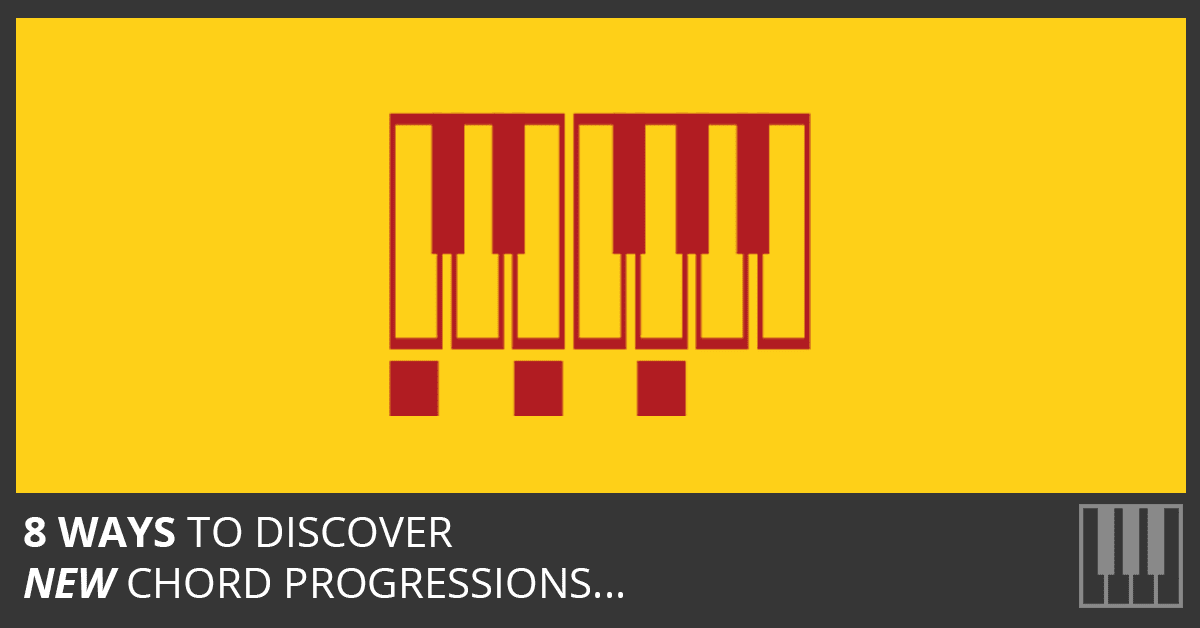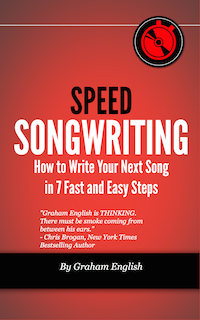
Here's a handful of my top techniques that I use to develop new and interesting chord changes.
1. Stick with I-IV-V
I know it's not new, but I-IV-V doesn't have to be uninteresting. There's a reason why these chords are so fundamental to our harmony. So master them. Use their constraints to challenge your songwriting ability.
2. Copy another song's chord changes
Just take a look at the top 10 in the past ten years, and you'll find a long list of songs that use the same chord progressions. For example, the chord changes to Prince's Purple Rain have been used before and after many, many times. The challenge then becomes how to write a unique melody over those chord changes.
3. Copy another song's chord changes and modify them
One of my favorite techniques to come up with chord changes is to copy another song and then modify it. For example, you can modify the color of the chords (major/minor/dominant 7/major 7/etc.). You can modify the rhythm of the chord changes by making them change faster or slower or syncopate them. You can play the chords backward or start in the middle. You get the idea.
4. Create a chord progression mashup
Take two or more songs and then combine their chord progressions. You can cut them up, play them simultaneously or play them sequentially. If you haven't done this before, it's fun. 🙂
5. Write a modal progression
Modal progressions are a straightforward place to start. The best modes to start using are Mixolydian and Dorian. Modal progressions are easy to memorize once you know the key tones that make the mode unique. I go over all the modes in the Speed Songwriting Mastery Program.
6. Write a blues
The blues doesn't have to sound like the blues. There's no point in trying to be another Robert Johnson. Just listen to Prince's Kiss or U2's When Love Comes To Town.
7. Dig into other genres
Classical music is an endless supply of time-tested music to recycle. Sting's Russians is an excellent example of a song based on Prokofiev's "Lieutenant Kije" Suite.
8. Use music software
I've used the virtual instruments in GarageBand and Logic Pro to inspire me, and I've messed around with lots of apps that have resulted in quite a few keepers. I have a songwriting tools page in the Speed Songwriting Mastery Program that will keep you inspired for years!
That's it for now. I'm sure you have some chord progression shortcuts that I haven't thought of yet. Please share them in the comments.

Enter your first name and email address below and click “GET ACCESS NOW!” to get the Speed Songwriting Cheat Sheet delivered to your inbox!
We guarantee 100% privacy. Your information will not be shared.

Hey, Graham, these are all good strategies, many of which I’ve used. I personally like to wink at the songwriter I’ve borrowed from, somewhere in the song lyrics. ( see my album, ‘An Ordinary Thing’) One of my most rewarding chord progression techniques, is to move the bass note around, while keeping the same chord on top. You can also do this while varying the top chord a bit. It’s sort of modal, but not quite. Thanks for all the good humoured advice and info. Donovan
Great tips! And I like the idea of planting “easter eggs” in your songs, even if you’re the only one who gets it. 🙂
I like to change chord types from major to minor or the other way around. It is unexpected and connects emotionally. I also like your tip to add 7ths or other tones too, like 9/11/13. I think this works great when it happens in one instrument but not in another, for example, guitar playing triads and keys playing color tones.
Great tips, Eric! Thanks for sharing. 🙂
Hi Graham,
You could easily add secondary dominants or borrowed chords to a I IV V and have lots of spicy sounds to work with.
For example :
I V/IV IV V/V V V7 I
Or
I vi iio7 V7 I
The iio7 comes from the parallel minor.
Thanks for writing this post. Ive never really written a blues before gonna try that and may add some spice to it!
Love it! And can’t wait to hear that blues. 🙂
Great tips, Graham. Thank you.
For tools, I find Chordbot (IOS) to be extremely useful, because it is so simple to use that I am not distracted by program complexities. It lets you easily try different styles and variations. I use it for prototyping new progressions all the time.
Really cool app! Thanks for the comment. 🙂
I play the blues all the time mixed with surf and punk then throw some country bends into the mix every once in awhile.